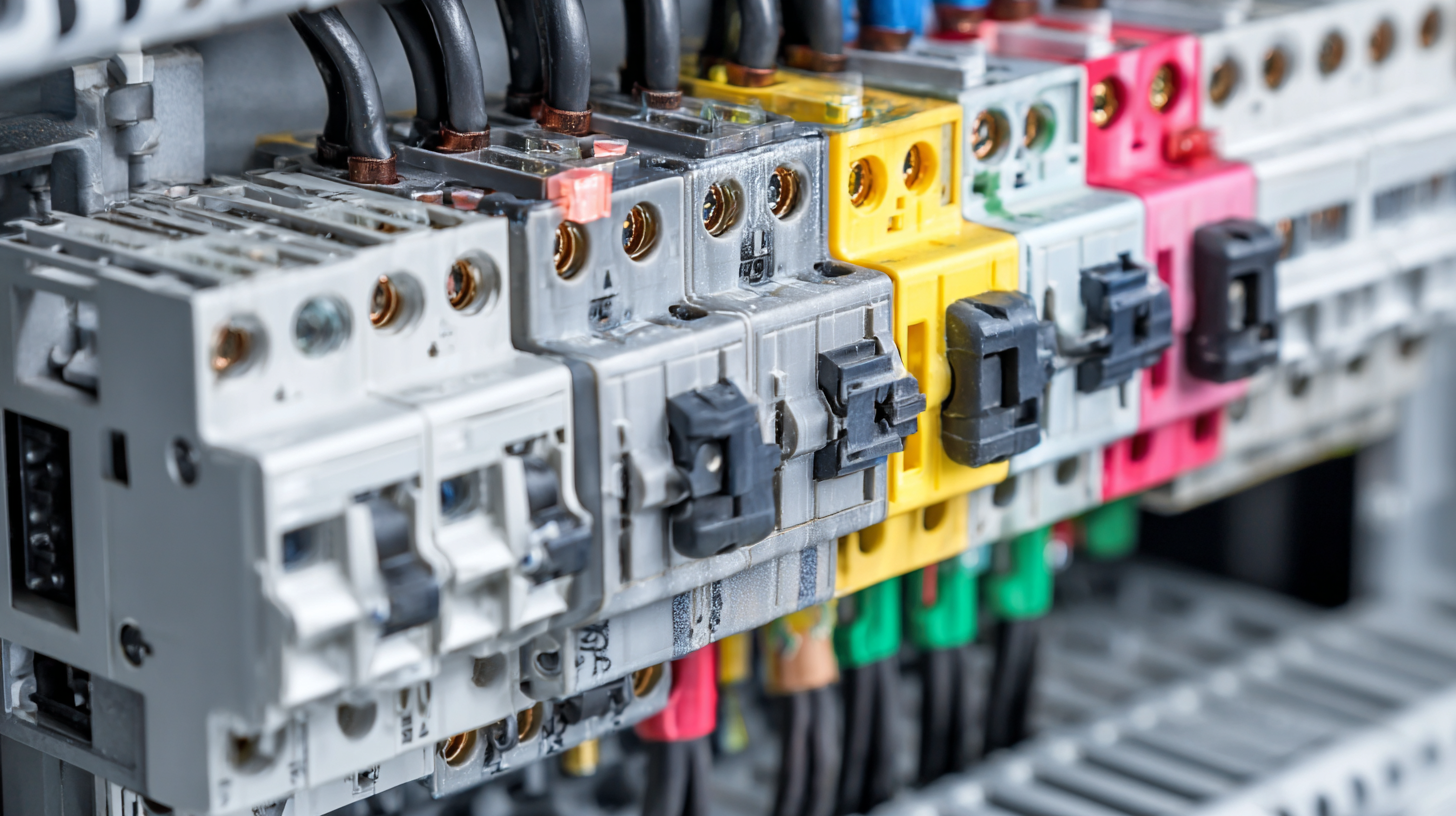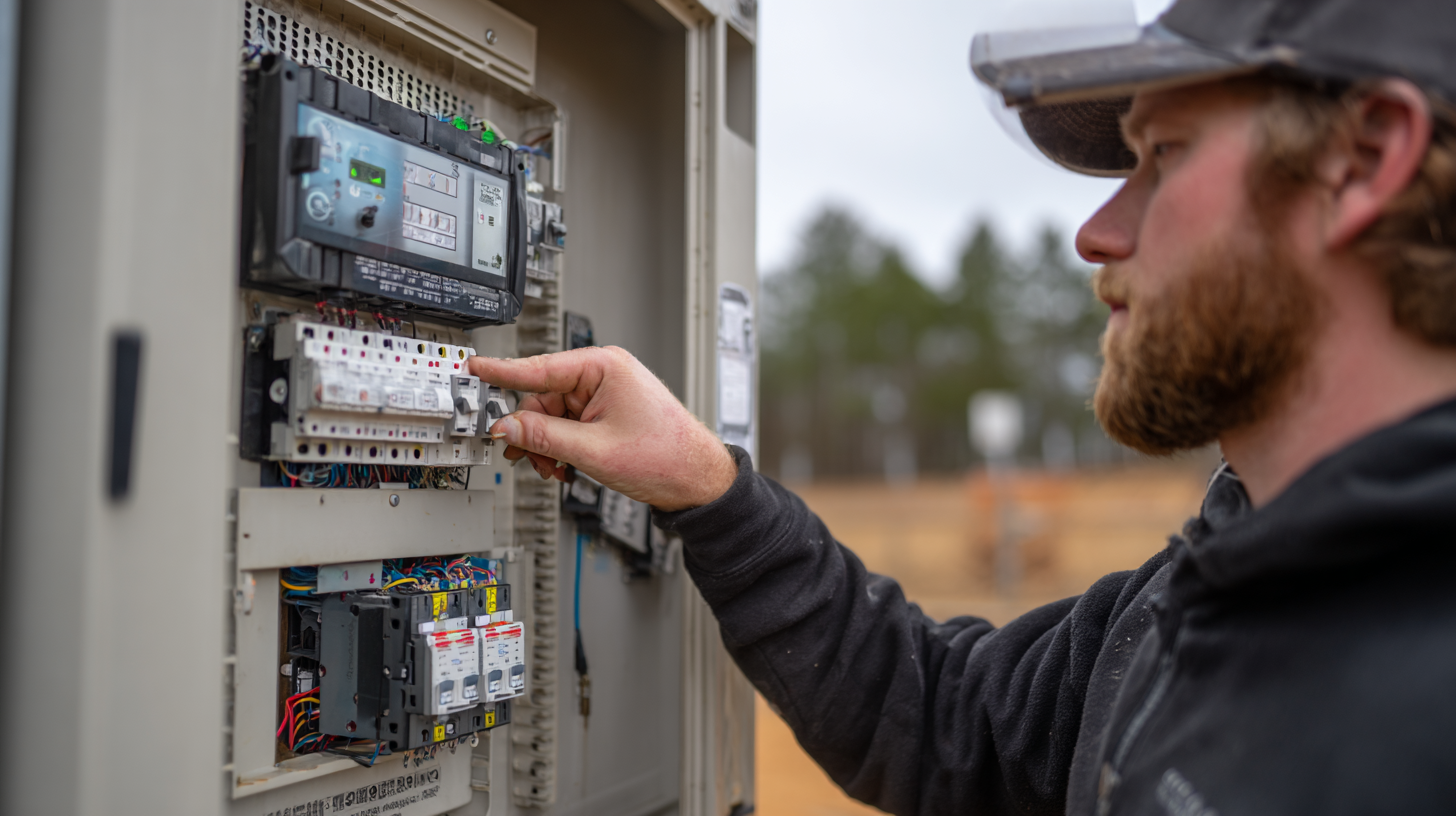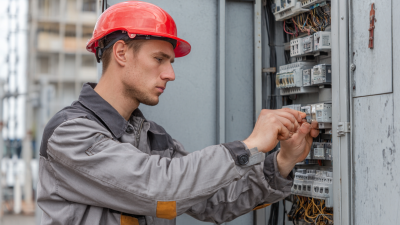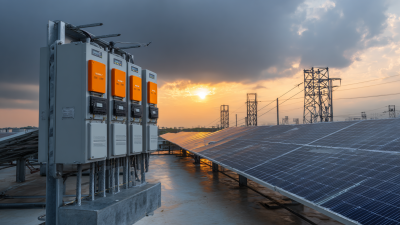Understanding DC Circuit Breakers: Key Specifications and Their Impact on Renewable Energy Systems
The integration of renewable energy systems is reshaping the electrical landscape, making the understanding of dc circuit breakers (DCBs) crucial for ensuring efficiency and safety in these applications. With the global renewable energy capacity expected to reach 4,800 gigawatts (GW) by 2030, the demand for reliable protection devices such as DCBs is surging. According to industry reports, the adoption of DCBs in photovoltaic systems alone is projected to enhance system performance and operational safety, reducing maintenance costs by up to 25%.

Furthermore, the unique requirements of direct current (DC) systems, especially in solar and energy storage applications, necessitate a thorough comprehension of key DCB specifications, including voltage ratings, interrupting capacity, and response times. As the energy sector pivots toward sustainability, the role of DCBs is becoming increasingly significant in facilitating the efficient and safe operation of renewable technologies.
Key Characteristics of DC Circuit Breakers in Renewable Energy Applications
DC circuit breakers play a crucial role in the effective management of renewable energy systems by enhancing safety and reliability. With an increasing demand for renewable energy sources, the market for these breakers is expected to grow significantly. According to a recent market analysis, the vacuum circuit breaker market alone is projected to exceed $5.9 billion by 2024, with a compound annual growth rate of 7.9% from 2025 to 2034. This growth is driven by the need for efficient electrical distribution in utilities, industries, and commercial sectors.
Furthermore, the specific characteristics of DC circuit breakers are essential for applications like photovoltaic inverters, where high efficiency and compact design are paramount. The use of solid-state and mechanical circuit breakers can optimize system performance at various voltage levels, including low, medium, and high voltage. The implementation of SPWM (Sinusoidal Pulse Width Modulation) generators in inverter designs underscores the adoption of advanced power management techniques, which are vital as more renewable energy sources become integrated into the grid. As energy demands continue to rise, the development of high-integrated current sensors further supports the safety and reliability of these systems, ensuring that operational conditions are monitored effectively.
Understanding DC Circuit Breakers: Key Specifications and Their Impact on Renewable Energy Systems
| Specification | Value | Impact on Renewable Energy Systems |
|---|---|---|
| Voltage Rating | 600V DC | Ensures compatibility with solar PV systems. |
| Current Rating | 250A | Supports high current flows in energy systems. |
| Interrupting Capacity | 50kA | Reduces risk of system failure during faults. |
| Form Factor | Compact Design | Facilitates installation in space-constrained environments. |
| Response Time | <1 ms | Enhances operational safety and minimizes damage. |
| Construction Type | Dual-function | Limits service interruptions during maintenance. |
Impact of Voltage Ratings on Performance of DC Circuit Breakers
 Understanding the impact of voltage ratings on the performance of DC circuit breakers is essential, especially in the context of renewable energy systems. As the global low voltage DC circuit breaker market is projected to grow significantly, reaching $2.24 billion by 2032, the role of voltage ratings will become increasingly crucial. Higher voltage ratings typically mean better handling of fault currents and greater efficiency in energy management systems. This is particularly important in applications where renewable sources, such as solar and wind, feed into the grid, requiring reliable and responsive circuit protection devices.
Understanding the impact of voltage ratings on the performance of DC circuit breakers is essential, especially in the context of renewable energy systems. As the global low voltage DC circuit breaker market is projected to grow significantly, reaching $2.24 billion by 2032, the role of voltage ratings will become increasingly crucial. Higher voltage ratings typically mean better handling of fault currents and greater efficiency in energy management systems. This is particularly important in applications where renewable sources, such as solar and wind, feed into the grid, requiring reliable and responsive circuit protection devices.
Tips: Ensure to select circuit breakers that are optimized for the voltage levels specific to your system’s requirements, as this will enhance both safety and performance. Regular testing and maintenance of these components can also prolong their lifespan and maintain their efficacy in fault conditions. Additionally, consider integrating advanced technology like superconducting fault current limiters in medium voltage DC systems, as they can further improve performance by providing enhanced protection against overcurrents.
Role of Tripping Mechanisms in Enhancing System Safety and Reliability
In renewable energy systems, the incorporation of DC circuit breakers plays a crucial role in enhancing safety and reliability, particularly through their tripping mechanisms. These mechanisms are responsible for detecting fault conditions and quickly disconnecting the electrical supply, thereby preventing damage to the system and ensuring the safety of personnel. According to a report by the International Renewable Energy Agency (IRENA), the integration of advanced tripping mechanisms can reduce fault occurrence by up to 30%, significantly minimizing downtime and maintenance costs in renewable installations.

Furthermore, tripping mechanism technologies have evolved with the increasing complexity of renewable energy systems, such as solar photovoltaic (PV) and wind farms. The use of intelligent tripping systems, incorporating features like current limiting and arc detection, has been shown to provide more reliable operation under transient conditions. A study published in the Journal of Electrical Engineering & Technology reveals that systems utilizing these advanced breakers experienced a 40% improvement in reliability metrics, thereby enhancing overall energy production and operational efficiency. As the penetration of renewables continues to rise, the role of sophisticated tripping mechanisms in DC circuit breakers will be vital in safeguarding these critical infrastructures.
Importance of Current Ratings for Optimal Operation in Renewable Systems
In the realm of renewable energy systems, the importance of current ratings for DC circuit breakers cannot be overstated. These ratings are critical for ensuring the optimal operation and safety of energy systems that harness solar, wind, and other renewable sources. According to the Electric Power Research Institute (EPRI), improper current ratings can lead to excessive heating, malfunctions, and ultimately, reduced system efficiency. With rising reliance on renewable energy, accurate assessment of current rating specifications is essential to mitigate risks and enhance reliability.
Furthermore, industry reports indicate that a significant percentage of operational failures in renewable systems can be attributed to inadequate circuit breaker specifications. The International Energy Agency (IEA) highlights that as the installation of DC-coupled solar systems increases, the demand for circuit breakers with precise current ratings has also surged. For instance, a study by the National Renewable Energy Laboratory (NREL) suggests that selecting a circuit breaker with a current rating that exceeds the system’s maximum expected load can not only prevent nuisance tripping but also improve overall energy management efficiency by up to 15%. This underscores the pivotal role that proper current ratings play in supporting the longevity and performance of renewable energy systems.
Comparative Analysis of DC Circuit Breakers for Different Renewable Technologies
The demand for DC circuit breakers is on the rise, particularly as renewable energy technologies like solar and wind become increasingly integrated into our energy systems. A comparative analysis of various types of DC circuit breakers reveals substantial differences in their specifications and effectiveness depending on the renewable technology they support. As the global DC circuit breaker market is projected to grow from $5.39 billion in 2025 to $9.13 billion by 2032, driven significantly by electric vehicle infrastructure and renewable energy integration, understanding these distinctions is critical for stakeholders in the renewable energy sector.
One crucial tip when selecting a DC circuit breaker is to consider the specific requirements of the renewable technology in use. For instance, circuit breakers designed for solar applications may have different surge protection and efficiency ratings compared to those used for wind power. Additionally, their performance in various fault scenarios is essential to ensure reliability and safety in these renewable systems.
Moreover, the recent reports highlight that the market for DC circuit breakers is expected to exhibit a compound annual growth rate (CAGR) of 7.81% during the forecast period. This growth underscores the importance of evaluating not just the present needs, but also future scalability and adaptability of the circuit breakers as renewable technologies continue to evolve.
Comparison of DC Circuit Breakers for Different Renewable Technologies
Related Posts
-

Innovative Usage Scenarios of DC Molded Case Circuit Breakers in Modern Electrical Systems
-

Exploring Innovations in Molded Case Breakers at the 138th Canton Fair 2025: Industry Trends and Insights
-

How to Choose the Right Electric Breaker for Optimal Safety and Efficiency
-

Exploring the Impact of Motor Protection Technologies at the 138th Canton Fair 2025 in China
-

7 Essential Tips for Choosing the Right Electric Breaker for Your Needs
-

Understanding the Impact of DC Switches on Renewable Energy Systems Efficiency








